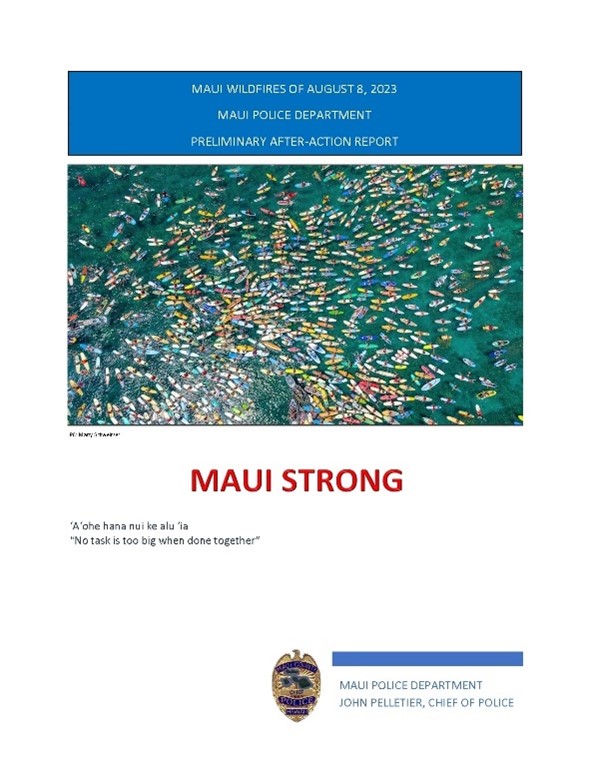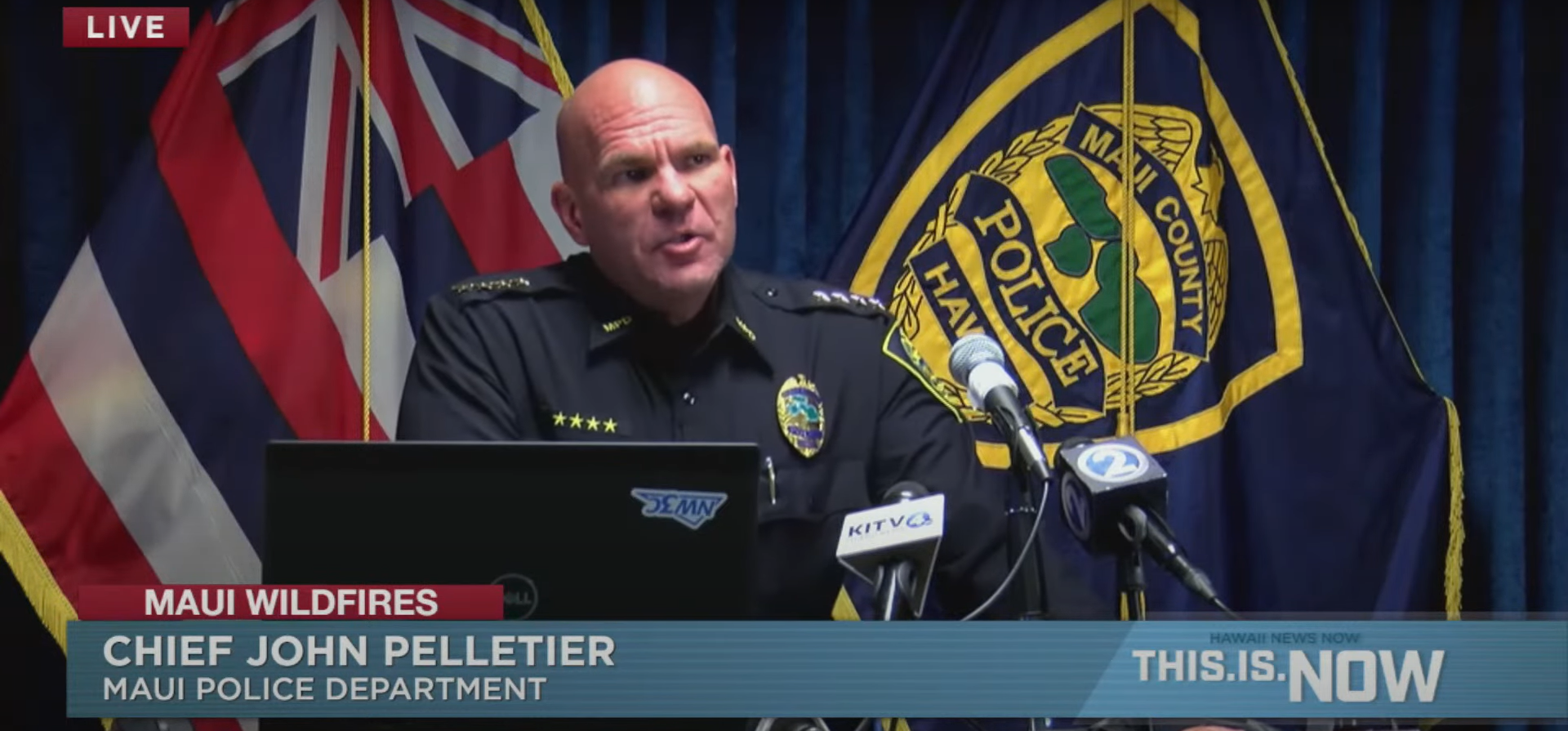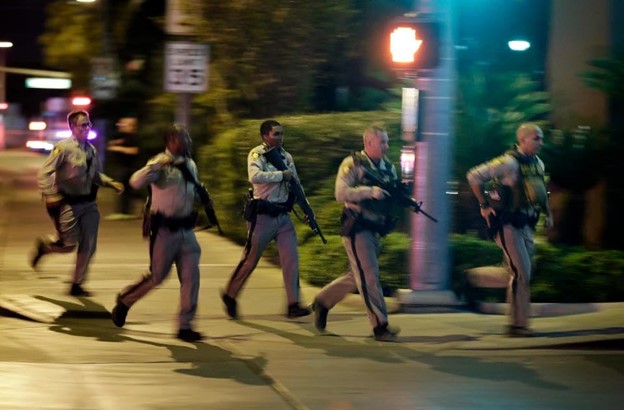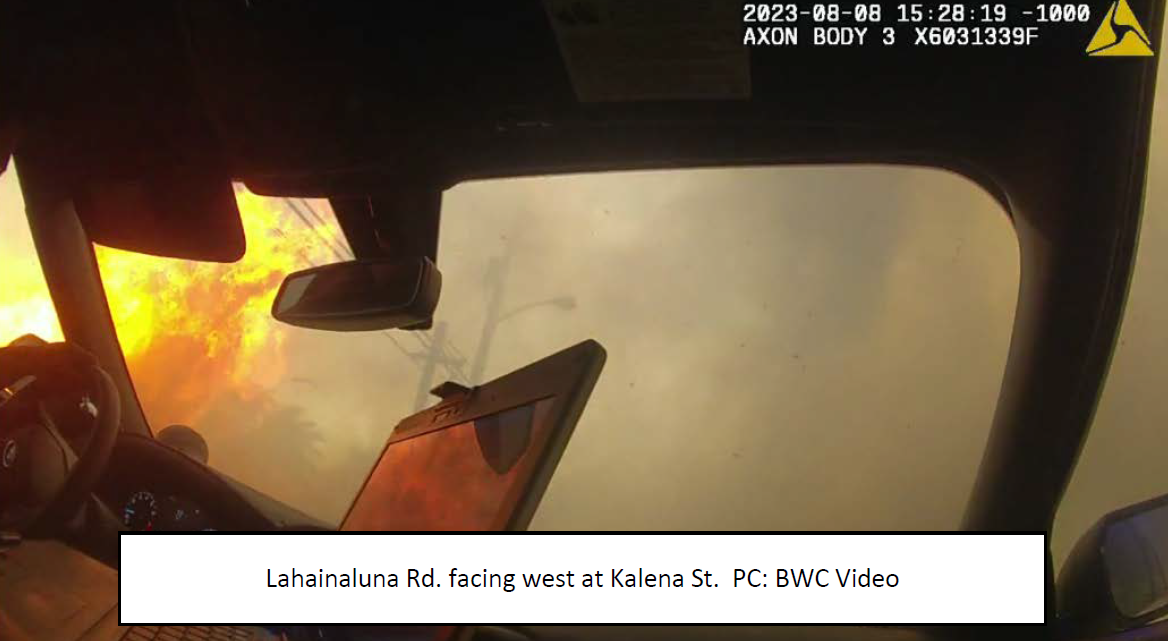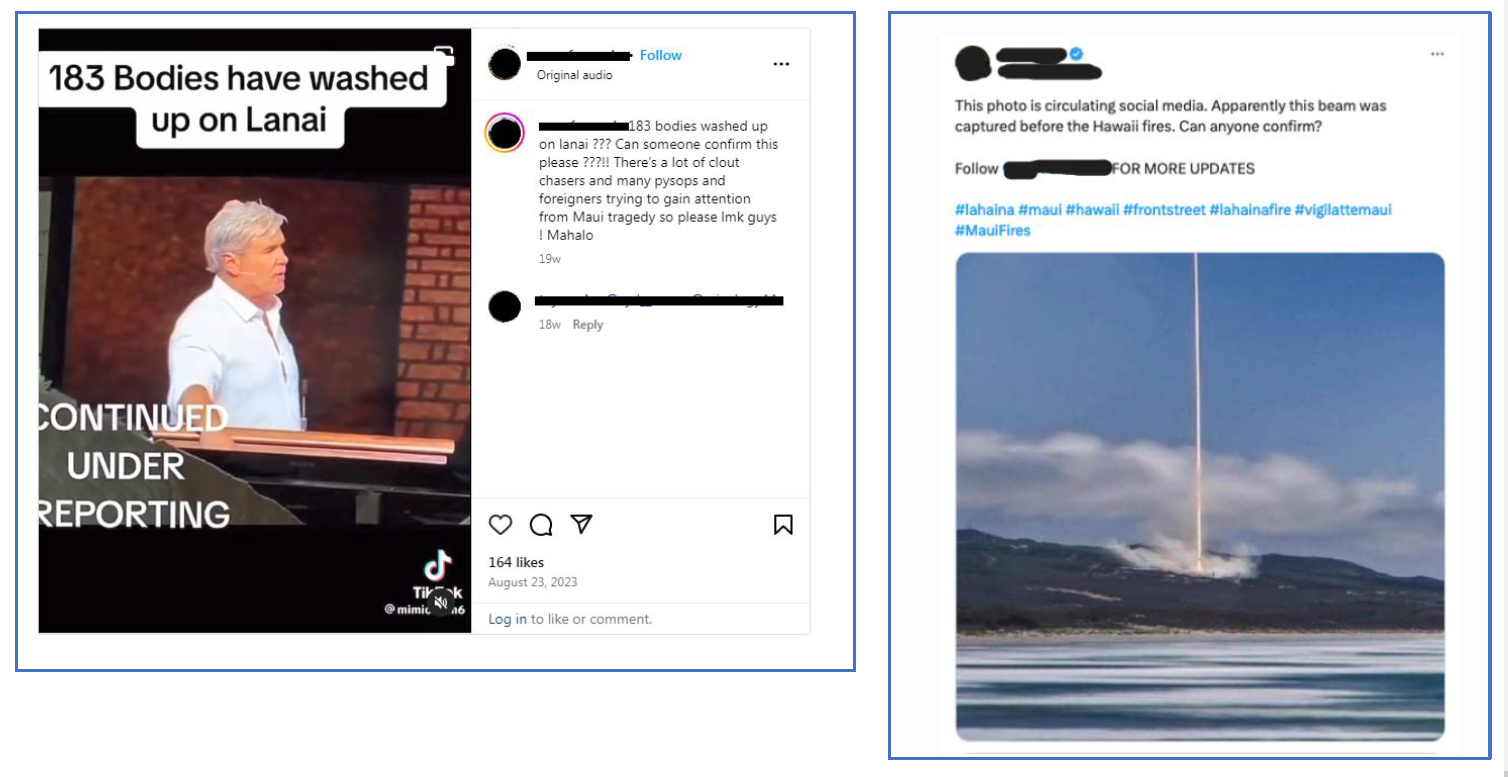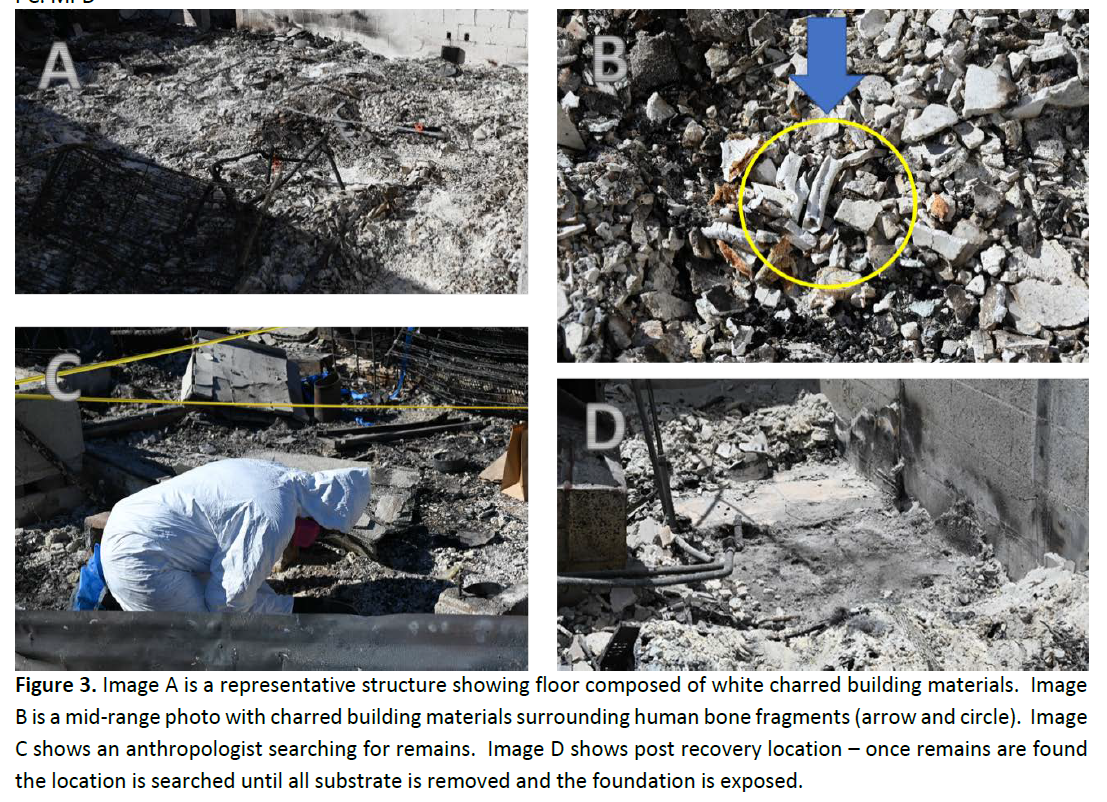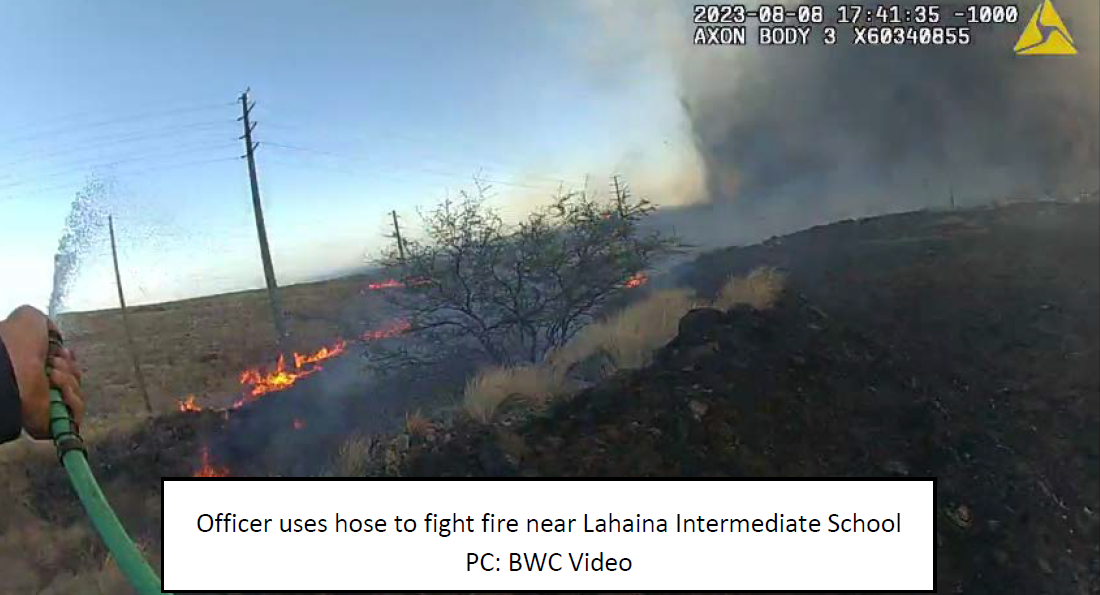|
February 10, 2024 Maui Chief John Pelletier speaks with PERF about the after-action review of his agency’s response to the horrific wildfires
PERF members, This week the Maui Police Department released an after-action report about the department’s response to the August 2023 wildfires, which killed more than 100 people and destroyed most of the town of Lahaina. I spoke with Maui Chief John Pelletier, who took over the agency in 2021 after 22 years with the Las Vegas Metropolitan Police Department. Chuck Wexler: You spent most of your career with the Las Vegas Metropolitan Police Department. Tell me how you became the police chief in Maui. Chief Pelletier: My mother was a counselor at the Lahaina Intermediate School here more than 20 years ago. And I asked my wife to marry me here in 2004. About 30 minutes before I asked her to marry me, I told her this is where I was going to end up. So we’ve been planning to come here for almost two decades, but the original plan was to retire anonymously. Then I received the job announcement and brought it home to my wife. She said, “I thought we were going to be anonymous.” I responded, “Everyone comes to Hawaii and takes. They want something from the place. I have a unique skill set. I understand policing a tourist destination and community-based policing at the highest level. Instead of us just taking from Maui, we could give back.” Without hesitating, she said, “You have to apply then.” I did, and now here I am. Wexler: Were there challenges coming in as an outside chief? Chief Pelletier: Chiefs who grow up in their own agency have an advantage, in that they understand the entire agency and the agency knows them. But they’re also limited, because they can only bring to that agency what the agency has already given them. Chiefs who come from the outside have a difficult challenge, because they have to learn a new agency and the agency has to learn about them, and that takes time. But they bring different ideas, and can be a change agent, and can foster an entire leadership team that can learn from each other and grow. So they can be more effective by allowing growth from both the inside and the outside.
Chief Pelletier speaks about the after-action report at a press conference on Monday (Source: Hawaii News Now) Wexler: You were the incident commander during the 2017 mass shooting at a music festival in Las Vegas, which is the deadliest mass shooting in U.S. history. What were the similarities and differences between the responses to the two incidents? Chief Pelletier: You have two completely tragic situations, so the similarity is that you have a community ripped apart and you want to help. Both incidents galvanized support; you saw it in Vegas and you saw it here.
Officers respond to the 2017 Las Vegas mass shooting (Source: 11 Minutes/Paramount+) There’s also a wellness component. I appreciated that officer wellness was one of the six pillars in the report by the President’s Task Force on 21st Century Policing. Officer wellness is often forgotten, but it’s been at the forefront for the Las Vegas community. In Maui, we had wellness resources here before the fire, then we added more wellness resources after the fire [pp. 85-86]. A huge difference is that it’s not an individual who created this fire. Everybody wants to have someone to blame, but that’s not how this works. We had an act of man with the shooting, and we had an act of nature with the fire. And we had the police taking the primary role responding to the shooting, while we’re secondary to the fire department and emergency management during a fire. But both incidents are in the public eye and the world news. And they’re both tragic, chaotic events, and they leave a community and a department ripped to its core. You want to do everything you can to take care of the department and the community.
Officer body-worn camera footage featured in the report Wexler: Tell me more about your officer wellness initiatives. Chief Pelletier: When I attended the IACP Conference this past October in San Diego, I connected with people from the Bureau of Justice Assistance’s VALOR Initiative. They came out and did an assessment of what we’re doing right, what we need to do, and how we can collaboratively work to help our people. We’re trying to be forward-thinking and take care of our people’s needs, because we know PTSD often shows itself at the five-year mark. One thing we’re looking to do is allow all our employees a 30-minute wellness break. Each of our facilities has a fitness center, but that’s not the wellness everyone wants. Maybe they want to do yoga, or meditation, or some type of group wellness. Our planning and training section will put together a list of appropriate wellness training activities, then each employee could sign out for those activities and we’ll have a training record. Wexler: Social media, including live video, played a role in both incidents. Can you talk about how that presented challenges, as well as how you used it to share information? Chief Pelletier: It’s a double-edged sword. You want the live-streaming and instant communication to alert people. In Las Vegas, we were able to put out information that the suspect was down, which quickly quelled the panic. The ability to effectively use that communication is a huge resource for good. But our report also talks about mis-, dis-, and mal-information [pp.23-24, pp.91-94], which we define in the document. We put some examples in there. We had people asking questions about whether the fire was started by laser beams. I had people ask if bodies were washing up on a neighboring island, which absolutely was not true.
Examples of mis-, dis-, and mal-information cited in the report So during an incident like this, we have to recognize that there is going to be a mis-, dis-, and mal-information campaign. Our state Office of Homeland Security said they researched the origin of some of the laser beam misinformation and found it went back to China. The whole world is not our buddy. If someone can create some chaos, they will. This is similar to the Las Vegas shooting. ISIS claimed responsibility for that shooting, and the federal government, particularly the FBI, researched whether the assailant had any ISIS affiliation. They found that wasn’t the case. But a group like ISIS is going to seize an opportunity to create panic and fear. We in law enforcement need to realize that misinformation will come, and we need to get through that to understand what we’re really up against. Wexler: Tell me about the Morgue Identification and Notification Task Force (MINT) [pp. 63-78]. Chief Pelletier: What was innovative about the MINT was that we embedded law enforcement professionals — officers and detectives — in the morgue and forensic facility. Communication was instantaneous. We’d be on the phone taking a report from someone whose uncle is missing, and they’d say, “I know he had an artificial hip put in two years ago.” We might have an unidentified body with an artificial hip who was in a car with other family members. Now we could use DNA to confirm the identity of the person with an artificial hip and identify everyone else in the car. And officers were right there, not an hour away or a phone call or email away. We had all but one person identified at the two-month mark. In my opinion, that’s because technology and Rapid DNA got here as quickly as it did, and because we embedded people and worked together as a team.
Images from the report of MPD’s efforts to recover remains Wexler: How did you use anthropologists [pp. 69-70]? Chief Pelletier: Over on Oahu we have the Department of Defense’s POW/MIA group at Pearl Harbor, where they’re still identifying folks. They know how to identify people whose bodies have been damaged. They helped us say, “That’s human. That’s not human.” The anthropologists were key, because we wanted to make sure we left no one behind and collected as much of everyone as possible. In most disasters you have an intact body, but in a fire you don’t. Wexler: Can you talk about your department’s role in the trauma and rebuilding of the larger community? Chief Pelletier: As Sir Robert Peel said, the people are the police and the police are the people. We are Maui. These are our brothers and sisters, our sons and daughters. I have cops who lost their loved ones, and former department members who were lost. We’re all grieving too. That’s why, if the department can get out in front and speak about these issues and wellness, I think it helps. I think it really puts these issues at the forefront. So we’re looking for opportunities to heal. Just the other day I was buying groceries, and I asked the lady cashing me out how she was doing today. She said, “Well, I lost my home and my business, and I’m here as a cashier to make ends meet.” Then she thanked me for my service. And I said, “Ma’am, thank you. We’re all in this together. Thank you, and I appreciate you, and we’re here for you.” Wexler: Which parts of the after-action report contain the most important takeaways for police chiefs? Chief Pelletier: Everybody should focus on the three pages of recommendations [pp. 87-89]. I would also highlight the MINT [pp. 63-78], because it’s an innovative thing that was never done before. When the next tragedy happens somewhere in the world, you have a blueprint to expedite and overcome obstacles by putting law enforcement with the doctors, forensic examiners, CSI, and other partners.
Officer body-worn camera footage featured in the report Thank you to Chief Pelletier for taking the time to share that information with our membership. Best, Chuck |

